Journal of Tourism & Hospitality
Open Access
ISSN: 2167-0269
ISSN: 2167-0269
Research Article - (2022)Volume 11, Issue 2
Due to busy working schedule people had no time to spend for food preparation and the reason consumers get attracted towards food delivery industry. Consumers demonstrate their determination by using technology but due to some inconvenience caused a gap has been created. For this reason, this study had been conducted to understand while used digital food service applications what challenges faced by consumer although they were so much influenced. The sample group for this study, which aimed to identify the challenges faced while obtaining food by using application technology, was made up of 160 consumers. The consumers chosen by snowball sampling method to locate specific groups of people. Quantitative approached had been adopted and questionnaires had been circulated in Kolkata area. The collected data were then analyzed and percentile methods were also enacted to approach the results. As a result of this study, it was found that consumers were very much influenced but mainly facing challenges of delivery timings which is very long and very poor follow up after sale.
Digital food services application; Influenced; Challenges; Delivery timings; Poor follow up
The development of digitalization and user-friendly apps has seen the changes and development of trends in technology over past few decades. There has been a tremendous change in the life styles of individuals and organizations due to the introduction of digital platforms. Now a day’s ordering through digital app is one of the powerful instruments by the customer to order food which need to be delivered on time [1].
The mobile apps era has thrown open a new dimension for modern marketing. Mobile application is a combination of marketing acumen and modern technology [2] exploring the Internet as a medium of advertisement and sell services and goods.
In modern days people uses this wired communication system for searching information, Products, various services to communicate service provider companies and this is increasing in a rapid way. The companies are also responding to these behavioral changes in customers and they are actively involved to promote social media as an integral element of their business [3]. Consumers also have a choice of price which makes it easy to compare and to select the timing which makes it accessible to the customers. Furthermore, in technology-based service perceived service quality has a positive impact on customer loyalty [4]. Time is very precious to every human being, that’s why people are getting attracted to applications services but in regards to food delivery system the delivery timing is playing a major role and consumers are facing real problem for this.
Literature review
Customers are attracted to technology that can provide them convenience through saving time and effort. That’s why the website design has to be framed in such a way that it must be trouble free for customer and the transaction has to complete within limited time span. Furthermost service providers also able to dispense their service swiftly by which both the side’s customer as well as marketers is benefited [5].
In this modern context with the inflow of high professionalism people are moving from one corner to another corner of this world, so the best opportunity to fill hunger is digital app to get food service in their lap. The digital food delivery app takes a remarkable step to embroil them in food service market [6]. Due to this remodeled food service technology people are freely roaming around the country without any agitation of food and they feel at home. Millennial are more prone to ordering through various online apps and they like get services on their fingertips within time limit.
E-Food ordering technology plays a major role in revolution of food delivery system as per the changes in customer’s preference. As depend on technology consumer prefer to get ready made food at their doorstep by clicking few steps on their device [7].
Majority of today’s food ordering population orders food by using mobile apps. This means the market is ready and has accepted this medium of food order and delivery. Interestingly, they were first introduced to the medium by their friends, followed by online ads. This reflects that social word of mouth, and electronic advertisements are a source of such referrals [8]. Foods get delivered with the help of logistic support of digital food app companies. This is a covenant situation within the parties and by this system customers get the classic restaurant experience at their own dinning space with high quality food [9].
In automated electronic food ordering system shoppers place their orders adroitly. Basically, digital food apps are designed in such a way that customer can place their order by single touch only [9,10], studied through secondary data and founded that food delivery apps must give priority on delivery timing and need to maintain.
As e-commerce continues to grow most of the organizations are prone to use website for their business purpose. That’s why online apps are increasing the business volume because it is offering more comfort, satisfaction and values to customer. But on the other hand, these online portals are growing without proper secured rules and regulations so much vulnerability cases are coming up [11].
Significance of the study
Because of rapid growth in food delivery industry through various apps people are very much attracted towards these services. This is becoming a very easily available mode to obtain ready food in a convenient way. Many of hotels and restaurants are more focused on food delivery system and as a result so many companies are entering into this field [12].
Statement of problem
In modern trend consumers are moving from tradition food service to digital food service apps. If the service providers really can improve in their service facility, then in near future a major number of consumers will switch over to this mode only. Thus, the study focuses on what are the challenges faced by the consumers [13].
Scope of the study
This research is conducted to know the factors that influenced customer to use the food digital app to satisfy their need and the challenges faced by them. In this, the study is limited to Kolkata where the variables which influence to use digital food app to reach high standard satisfaction. These findings may help the service providers to work upon these variables to fill up the gaps in the mind set of customers [14].
Objectives
This research has various objectives:
• To understand the influence level on consumers favoring digital food app services
• To find out the frequency of using digital food app channel
• To figure out the challenges faced by consumers in the course of using digital food app
Research methodology
Area of the Study: The Kolkata area
Sample size: We received 160 samples for this research
Data collection method: Data required for the survey was collected through snowball sampling method where in the Google form link was shared to the kin and keen and was asked to circulate it. Once the samples reached the desired limit, collection has been stopped.
Delimitation: A personal survey could not be done due to the prevailing pandemic situations. Data was collected and evaluated. This evaluated collected data is quantitative.
Research method: Descriptive research has been done based on the results from the samples collected.
Interpretations
Interpretation-1: A total of 160 samples were collected of which 61.9% of the respondents were Male and 38.1% were female. Males 99 and Females 61. The maximum respondents are from the age group between 18 to 25 years 55.6% (89). Followed by 36 to 50 years which is 23.8% (38), 26 to 35 years 15.6% (25) and finally the least respondents are above 50 years 5% (8) (Figure 1).
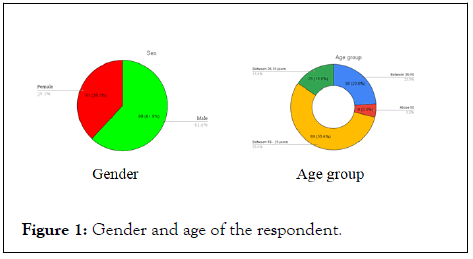
Figure 1: Gender and age of the respondent.
Interpretation-2: Out of these 93 are working, 14 are housewives, 52 are students and only 1 retired person.
Maximum respondents (67) order the food once a month, while (50) respondents order weekly and (37) respondents order twice in a month and only 6 respondents order daily (Figure 2).
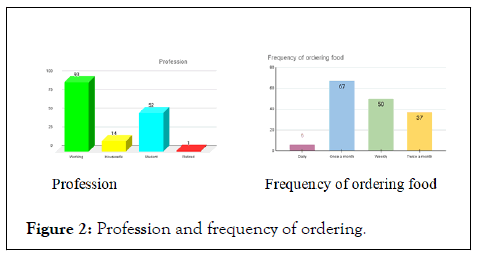
Figure 2: Profession and frequency of ordering.
Interpretation-3: There is almost an equal preference for both fast foods and traditional cuisine. 50.65 of the respondents go with traditional cuisine compared to 49.4%to fast foods. Most of the respondents go with non-veg (74.4%, 119 respondents) and vegetarian is ordered by only 25.6% which is 41 respondents (Figure 3).
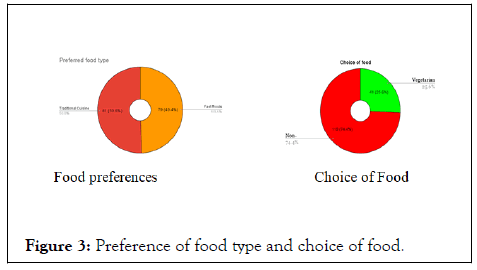
Figure 3: Tourism-Hospitality-choice
Interpretation-4: People order the food at different occasions like out of 160 respondents 57 respondents said that they order the food for Social or family gatherings, 49 due to lack of time to cook, 46 don’t want to cook so they order the food and 7 respondents said they will be ordering the food for business or office events and only one for special occasion.
There are many challenges while ordering online. 50% of the respondents say that the time taken for delivery after ordering is too high, while 24.4% says that the follow up after sales is poor.
18.8% of the respondents face the problem of slow site and 6.9% says that site doesn’t respond while ordering through digital app (Figures 4-6).
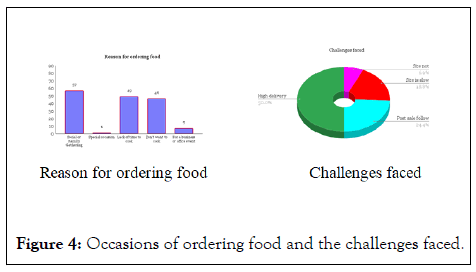
Figure 4: Occasions of ordering food and the challenges faced.
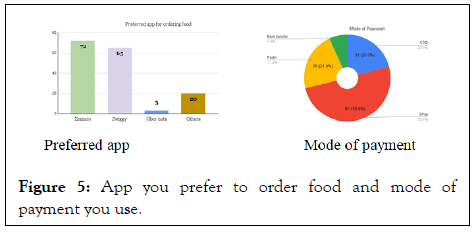
Figure 5: App you prefer to order food and mode of payment you use.
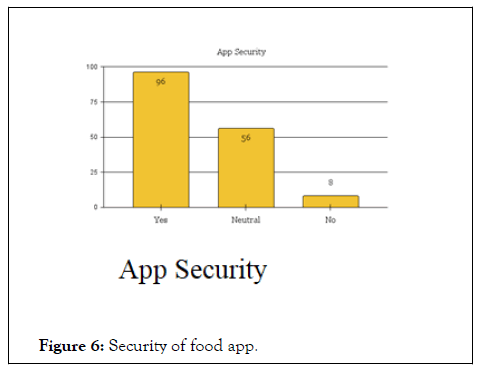
Figure 6: Security of food app.
Interpretation-5: There are many apps for ordering food of which most of the respondents use Zomato (72), Swiggy by 65, Uber eats by only 3 and 20 respondents order through other apps.
The payment mode used by majority of respondents while ordering the food is Gpay. 50.6% use this mode. Followed by Paytm 21.9%, then by COD by 20.6% and only 6.9% of the respondents transfer through bank.
Interpretation-6: 96 (60%) respondents feels that the app in which they order the food is secured while 8 respondents say that it is not secured, while 56 (35%) of them stay neutral about the security of the apps (Table 1).
| Sr.no | Questions | 1 | 2 | 3 | 4 | 5 |
|---|---|---|---|---|---|---|
| 1 | Sex | M | F | |||
| Respondents | 99 | 61 | ||||
| 2 | You fall under which age group | 18-25 yr | 26-35 yr | 36-50 yr | Above 51 yr | |
| Respondents | 89 | 25 | 38 | 8 | ||
| 3 | I am a | Working | Housewives | Students | Retired | |
| Respondents | 93 | 14 | 52 | 1 | ||
| 4 | How often do you order the food in a month through food app | Daily | Once a Month | Weekly | Twice a Month | |
| Respondents | 6 | 67 | 50 | 37 | ||
| 5 | Type of food that you prefer to order | Fast Food | Traditional Cuisine | |||
| Respondents | 79 | 81 | ||||
| 6 | Your preferred choice of food while ordering | Veg | Non-Veg | |||
| Respondents | 41 | 119 | ||||
| 7 | When or why do you order food through digital app | Social or Family Gathering | Special Occasion | Lack of Time to Cook | Don’t want to cook | Office Event |
| Respondents | 57 | 1 | 49 | 46 | 7 | |
| 8 | Usually what are the challenges that you face to order food through digital app | Site not Responding | Site is Slow | Post-Sale Follow up is Poor | High Delivery Time | |
| Respondents | 12 | 28 | 40 | 80 | ||
| 9 | Which app do you prefer to order your food | Zomato | Swiggy | Uber Eats | Others | |
| Respondents | 72 | 65 | 3 | 20 | ||
| 10 | Which mode of payment is usually used for ordering food | Bank Transfer | Pay TM | Google Pay | COD | |
| Respondents | 32 | 36 | 80 | 12 | ||
| 11 | Is your food app secured | YES | Neutral | NO | ||
| Respondents | 96 | 56 | 8 |
Table 1: Total 160 respondents.
Findings
• Most of male like to order food through digital app more than female.
• Mostly youngsters in the age group between 18-25 years like to avail digital food ordering app.
• Working group of people preferred to order food and even a good number of students also preferred to order food through digital app.
• People like to order food in a good frequency almost once in a month or once in a week too.
• Consumers facing challenges of delivery time which is becoming an obstacle and facing challenges regarding follow up after sales.
• A large number of people liked to order through Zomato Food app compared to any other app.
Through the findings and analysis in this research it is evident that people are very much influenced of Digital food app. Service providers must improve on delivery timings and after sales follow up. People feel that these apps are very easy to use and it is secured regarding payment mode. Digital food apps are satisfying customers with their quality of service which customers are really looking for when they are in need.
• Food app must work on delivery timings which will help them to get more market.
• More advertisement and attractive web design on Digital food media can increase awareness.
• They should give more offers and combo pack option.
• Payment mode preferred by most of the people is Google pay.
[Google Scholar][Pubmed]
Citation: Das A, Ushasri B, Sharma U (2022) Digital Food Service Application: It’s Influence and Challenges Faced by Consumers. J Tourism Hospit. 11:492.
Received: 01-Mar-2022, Manuscript No. JTH-22-13670; Editor assigned: 04-Mar-2022, Pre QC No. JTH-22-13670 (PQ); Reviewed: 15-Mar-2022, QC No. JTH-22-13670; Revised: 22-Mar-2022, Manuscript No. JTH-22-13670 (R); Published: 29-Mar-2022 , DOI: 10.35248/2167-0269.22.11.492
Copyright: © 2022 Das A, et al. This is an open-access article distributed under the terms of the Creative Commons Attribution License, which permits unrestricted use, distribution, and reproduction in any medium, provided the original author and source are credited.